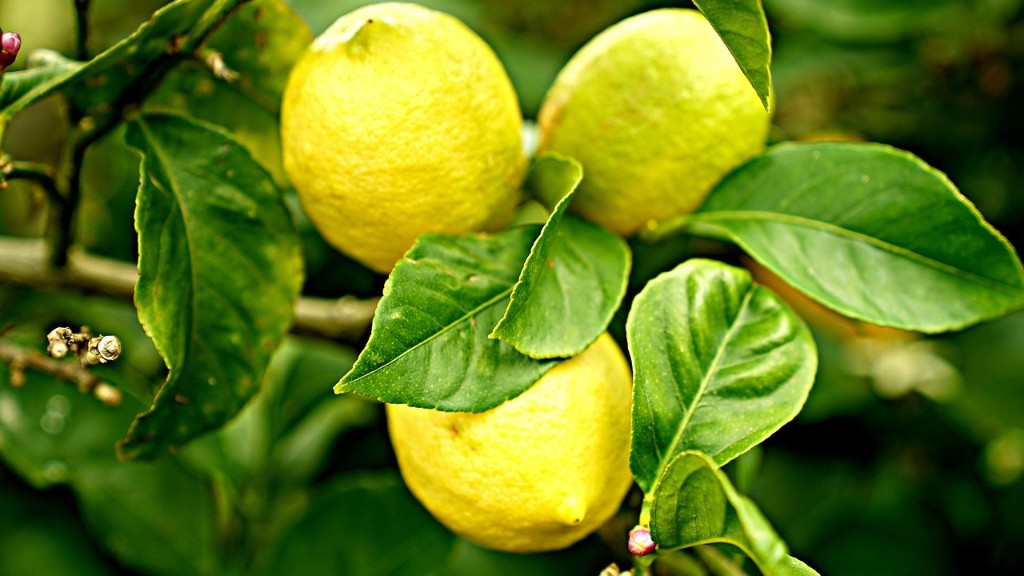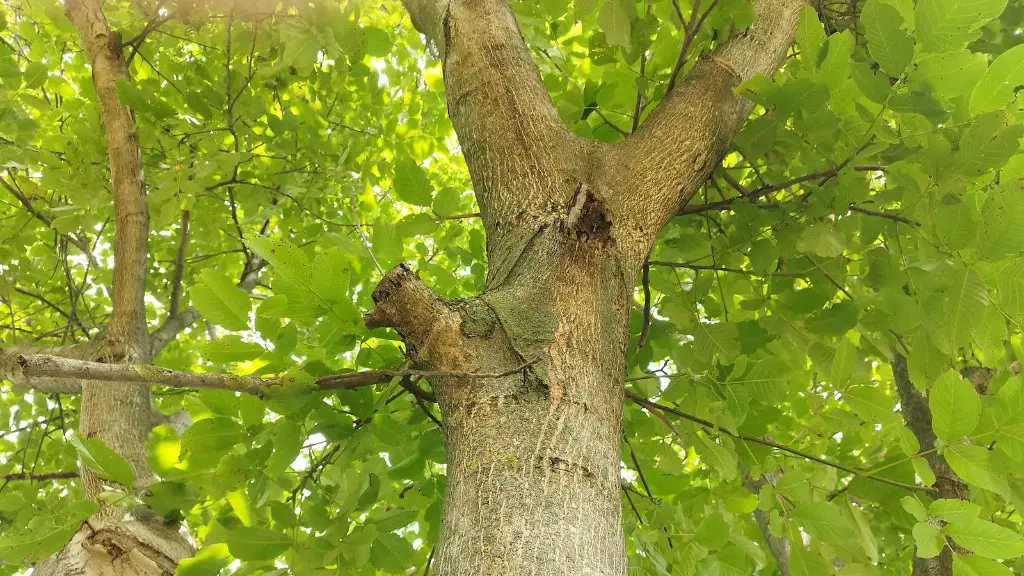Cultivating lemon trees and getting them to produce lemons can be quite difficult since they can be quite temperamental. Nonetheless, there’s no need to fret since there are some basic steps that can be taken to ensure that lemon trees get the best possible care and stand the greatest chance at producing fruit. Here is what an academic expert would advise.
Firstly, knowing the variety of the lemon tree is essential in order to determine what conditions it needs in order to be able to produce lemons. Once this is established, the next step is to maintain soil moisture by watering deeply but only when necessary. It is also advised to water around the drip line, not near the trunk, and to remove any weeds that might be competing for the soil’s nutrients.
It’s also important to ensure that the lemon tree gets enough sunlight, about 6-8 hours a day, for optimal fruit production. An additional tip is to plant in raised beds, especially in areas with clay soil. This will prevent roots from staying too wet for too long and ensure sufficient drainage.
In order to stimulate lemon production, regular pruning and the occasional trimming of any dead or diseased branches is advised. Additionally, applying an appropriate fertilizer at the recommended rate and timing can make sure that the lemon tree receives just the right amount of nutrients.
Finally, insect, disease and weed monitoring are important in any orchard, including a lemon tree. Implementing organic control methods as appropriate is essential as failure to do so may result in the tree attacking or being infested with pests, ultimately leading to a decreased production of fruit.
Soil Preparation
Before planting a lemon tree, it’s very important to prepare the soil properly. This includes cultivating the soil to a depth of around 60 cm and adding organic matter such as well-rotted manure, compost or mature soil conditioner. Furthermore, thoroughly mixing these in the soil ensures that the ideal soil pH is attained, which is essential for successful lemon tree production.
It’s also advised to check the soil’s drainage, as lemon trees need well-drained soil. If the soil doesn’t drain well it will remain wet and will therefore impede the growth of the lemon tree. A soil test can determine whether it’s necessary to add sand, compost, or any other amendments to improve the drainage.
Preparing the soil properly also helps ensure that the hole doesn’t settle quickly. Therefore, ensuring that the hole is twice as wide as the root system, by back filling the soil with a mix of organic matter and garden soil, and tamping the soil gently can be of great assistance.
Finally, in order to ensure the best possible growth and fruit production, consider adding a few spoonfuls of balanced fertilizer when transplanting a lemon tree. This will help the tree to establish quickly.
Pollination and Planting
When planting a lemon tree, it’s very important to select the right variety of trees. For example, some varieties, such as the Eureka and Lisbon, have a self-pollinating mechanism, making them an ideal choice for limited areas. Nonetheless, cross-pollination between different types of lemon tree and other citrus plants, such as oranges and tangerines, is still important in order to achieve the best, and most, lemon production.
Pollination, whether self-pollination or cross-pollination, is done by bees and other insects, therefore improving soil health by using natural fertilizers, providing proper drainage and mulching heavily can help attract the necessary pollinators.
Once the right tree is chosen, it’s time to plant. The ideal time for transplanting is in early spring. However, lemon trees can be planted all year round, as long as their location is not too exposed. It’s important to ensure the soil near the stem does not get dry and it is advisable to apply liquid fertilizer every two to four weeks for the first year, once the tree is in the ground.
Additionally, when planting more than one lemon tree, ensure that they are spaced properly in order to avoid overcrowding. In an orchard, six to eight feet between trees is usually recommended.
Finally, if lemon trees are planted in a container, make sure to use the right soil mix, keep the moisture levels constant during the growing season and to fertilize regularly, ensuring colander or drainage holes are not clogged.
Fertilizing and Pruning
When it comes to fertilizing, the best results are usually achieved by using a balanced complete fertilizer such as 10-10-10, every six to eight weeks during the growing period. Organic fertilizers can also be used but the results will not be as immediate.
Furthermore, avoid over-fertilizing as this can harm the tree and keep foliage dry and free from fertilizer residue in order to avoid any leaf burning. It is also important to note that the amount of fertilizer used should vary as the tree gets older as too much fertilizer can result in excessive, sappy and weak growth.
In addition, pruning lemon trees is recommended and it should be done with simple hand pruners, preferably sterilized beforehand. Pruning and trimming should be done after the harvest and in order to encourage new growth and fruit production, branches should be pruned back to the lateral buds.
Although pruning isn’t necessary to produce fruit, it is essential to keep a healthy, attractive and vigorous tree. Therefore, it is recommended to prune when needed, leaving the center of the tree open, and applying a balanced fertilizer afterwards.
Finally, when pruning, it is advised to attend to dead and diseased branches, creating a structure by cutting off branches that aren’t needed, and staying mindful of the lemon tree’s eventual shape or size.
Harvesting, Storing and Pest Control
Lemon trees usually produce fruit one or two years after planting and will eventually produce fruit continuously for around four to five months. It is necessary to watch out for changing weather conditions, as this can cause the fruits to ripen sooner, causing a decrease in the overall fruit production.
The fruits should be harvested when they are still slightly green as this will extend their shelf life. They can either be stored in the refrigerator or at room temperature. When stored in the refrigerator, they can last up to a month, while at room temperature they can be kept for up to one week.
It is also essential to control pests as early as possible, as not doing so can destroy fruits, flowers and leaves. Preventive measures that can be taken include removing affected leaves and fruits from the tree, and selecting pest-resistant varieties. Chemical insecticides should be used only as a last resort.
Organic pest repellents and insecticides should be preferred over their chemical counterparts. For instance, lemon oil, garlic oil and neem oil can be used instead of more toxic chemical insecticides, and diatomaceous earth can be used to control aphids as opposed to insecticidal soaps.
Finally, plants should be inspected frequently in order to identify any pest activity as soon as possible, in order to prevent any major damage and to help the lemon tree achieve maximum fruit production.




